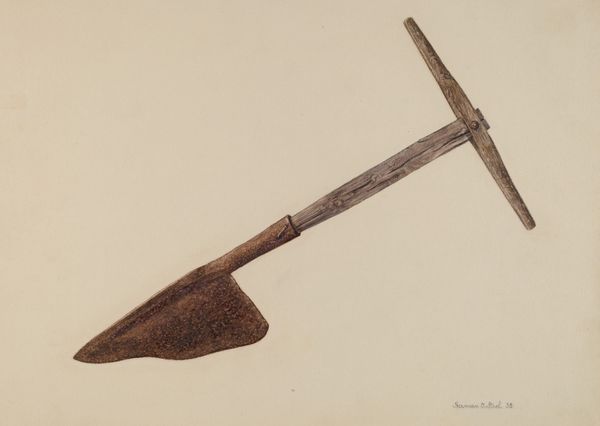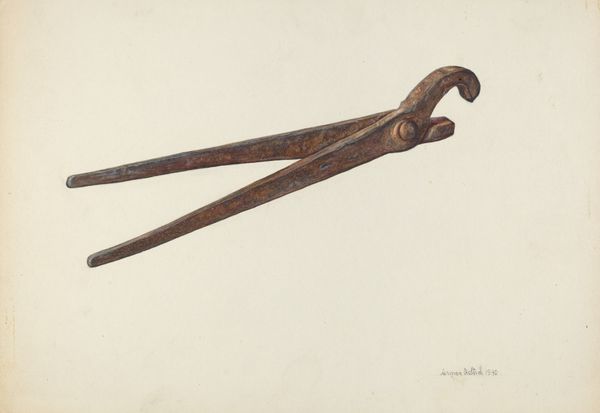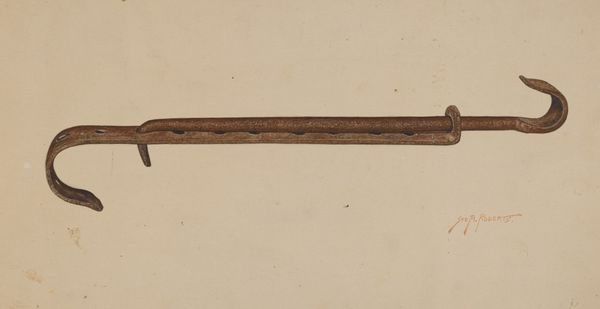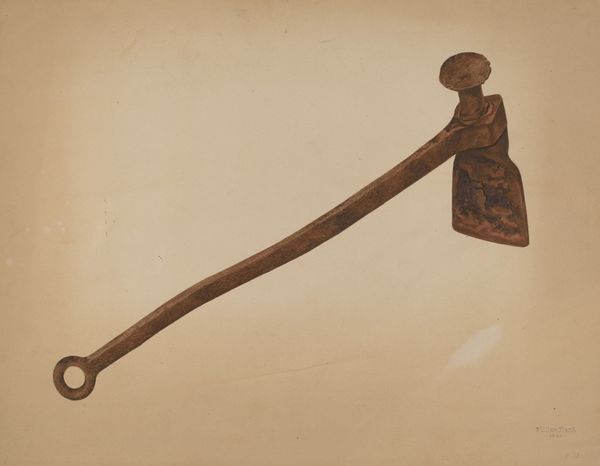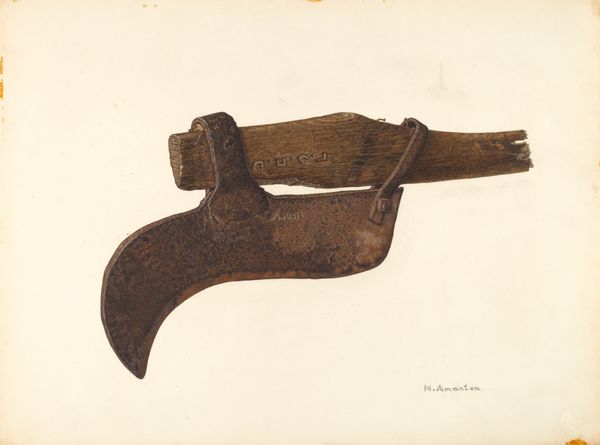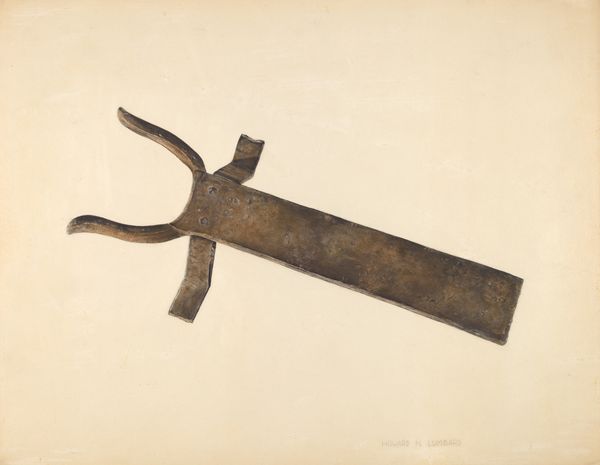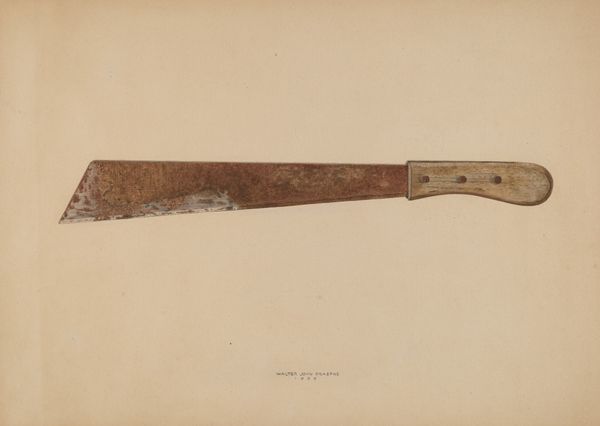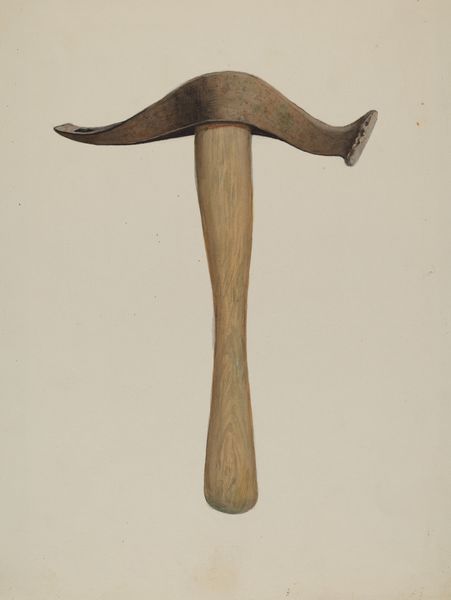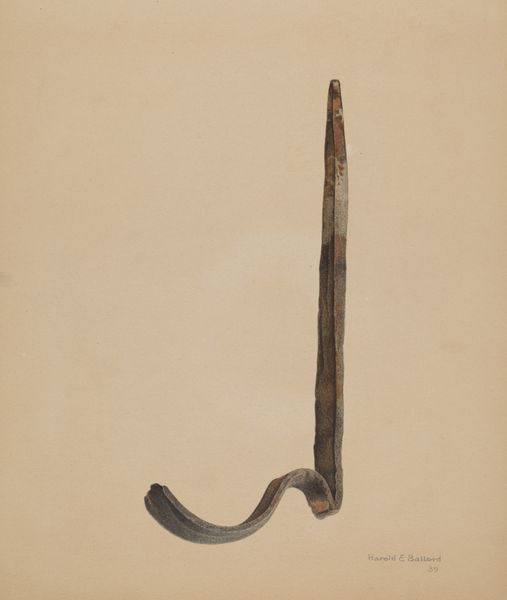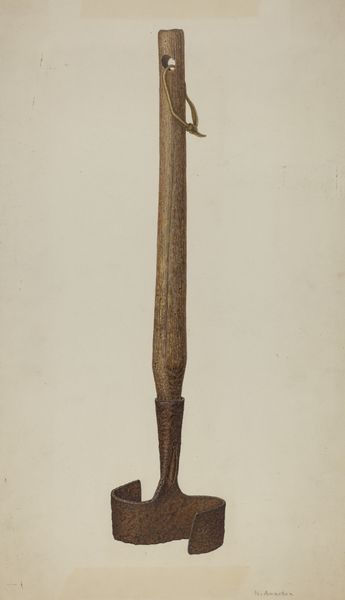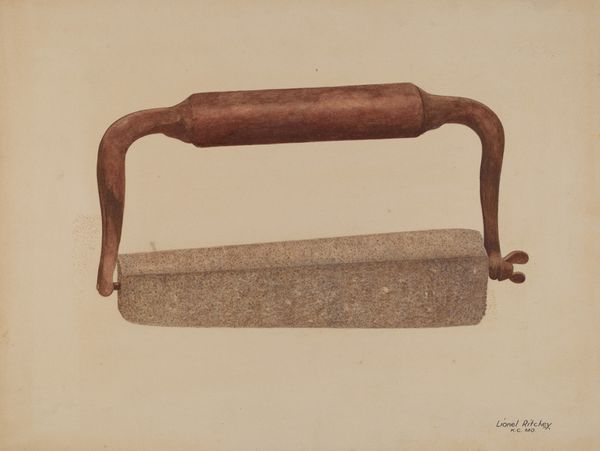
drawing, watercolor
#
drawing
#
charcoal drawing
#
watercolor
#
watercolour illustration
#
realism
Dimensions: overall: 24.6 x 35.8 cm (9 11/16 x 14 1/8 in.)
Copyright: National Gallery of Art: CC0 1.0
Editor: Here we have Alexander Anderson's "Straw Knife," created in 1939, using watercolor and charcoal. The level of detail in the rendering of the blade and the handle is captivating. What formal elements strike you most profoundly in this work? Curator: It is intriguing how Anderson emphasizes the relationship between line and volume. Notice how the contour line defining the knife's edge transforms as it meets areas of implied volume. The cross-hatching, especially on the handle, generates a sense of tactility, doesn't it? How do you perceive the interplay between the two-dimensional surface and the illusion of three-dimensionality? Editor: I see it too. The rendering almost feels photographic in its realism, but the watercolor softens the sharpness, lending it a sense of quiet nostalgia. Is the artist making some comment by immortalizing what may be an ordinary tool? Curator: An interesting conjecture. Observe, also, how the artist positions the object within the pictorial space. There's ample negative space, giving the object presence. Does this choice subtly elevate the object's importance beyond mere functionality? Editor: Definitely. The simplicity in rendering against such a neutral background invites closer examination, as though seeking meaning beyond the surface. It’s an unexpected contemplation of function and form. Curator: Precisely. Considering these observations allows us to appreciate how formal qualities can evoke an appreciation for utilitarian objects, enriching our experience of art. Editor: I am certainly more attentive now to the delicate balance between representation and presentation within such minimalist composition. Thanks for enlightening me.
Comments
No comments
Be the first to comment and join the conversation on the ultimate creative platform.
